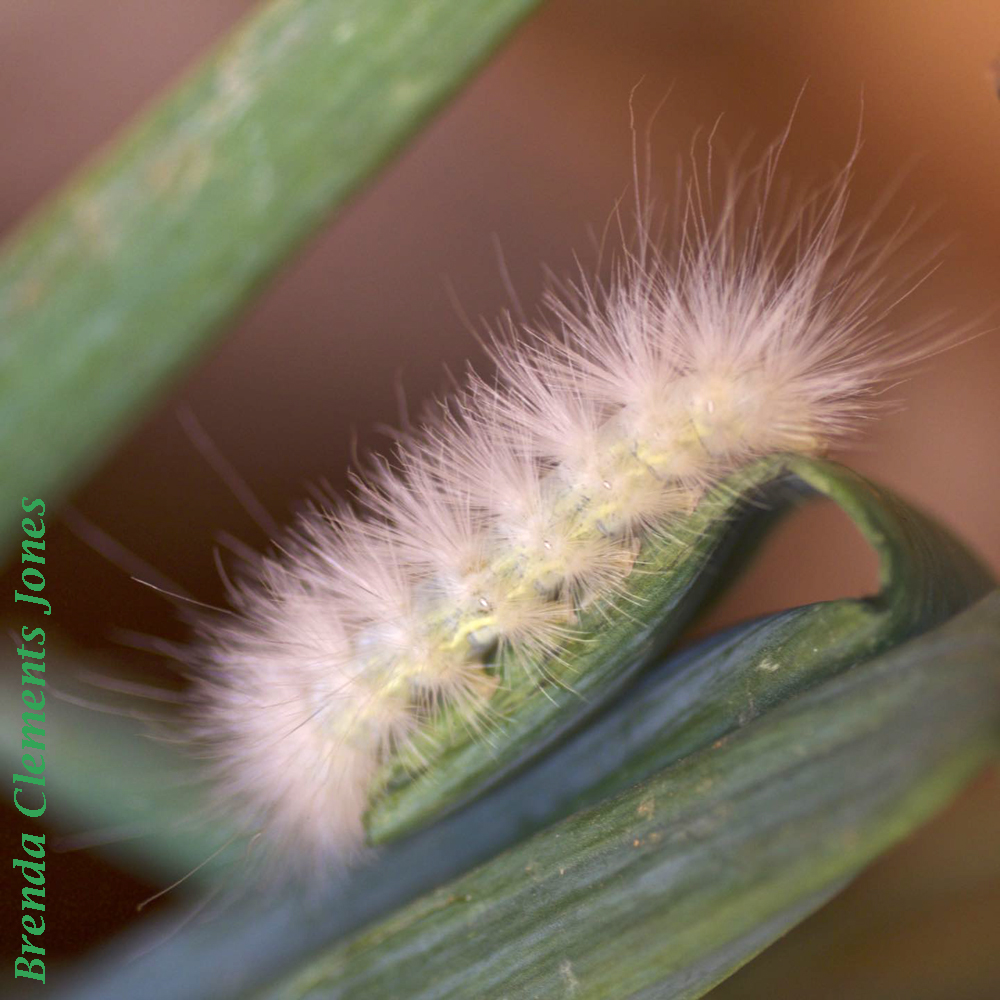
Yellow Bear Caterpillar (Spilosoma virginica). This is the larval stage of the Virginian Tiger Moth. These caterpillars are covered in tufts, or small tubercles, which contain many hairs of different lengths. Varying in color from caterpillar to caterpillar from snow white, soft yellow, brown-yellow, to orange-red.

The Yellow Bear Caterpillar is not poisonous but folks with sensitive skin could end up with an allergic reaction to these hairs. If you happen to have one come to rest on you, carefully remove it with a leaf.

When fully grown as a caterpillar, the Yellow Bears will be 2 inches long. They live across all of North America feeding, as generalists, upon their host plants of many vegetable, fruit, flower, weed, tree species as well as field crops. Vegetable gardens provide hosts to them with carrot, corn, cauliflower, potato and pumpkin. Also targeted are grasses and clovers. As they eat they skeletonize leaves. These caterpillars should be of no concern until the summer into fall group arrives on the scene. Until then there are not enough caterpillars to do any real damage to plants and trees.

Eggs of Yellow Bear Caterpillars are laid, 20 to 100 in a single layer on the undersides of host plants’ leaves. The eggs will hatch in about a week. The young caterpillars at this early stage are gregarious, feeding together on the leaves where they hatched. As they mature they will feed on their own.

After about 4 weeks, going from gregarious to independent, they are fully grown and seek secluded places to pupate. You’ll see mature caterpillars May through November. To pupate, caterpillars spin cocoons and spend the next 1 to 2 weeks transforming into moths.

The adult Virginia Tiger Moth is nearly all snow white except for one or two minuscule black spots on each wing. Their fuzzy legs are the same snow white with a few black spots. The midsection of the body shows bright yellow near the head and black dots along either side. Its wingspan is 1 to 2 inches.
